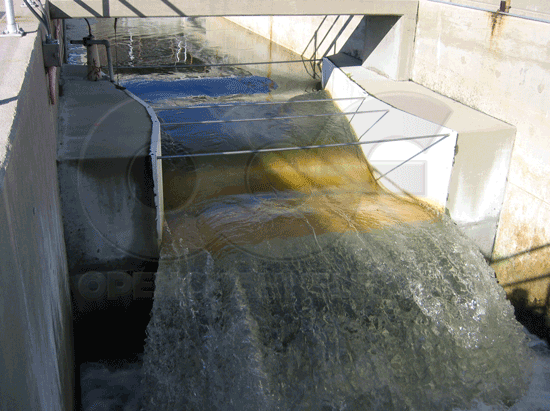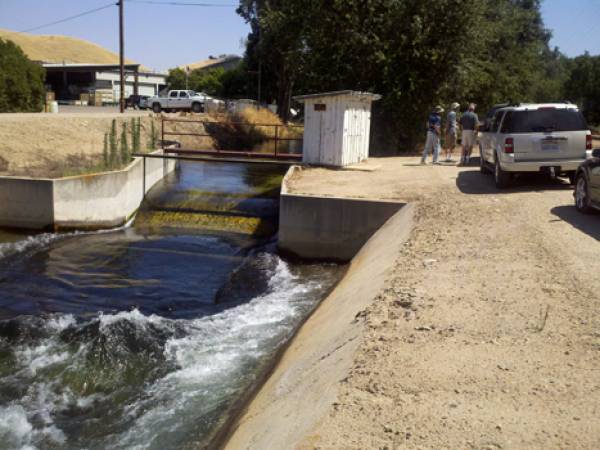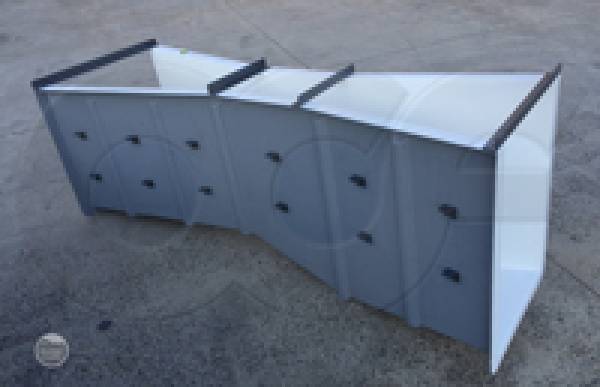This website uses a variety of cookies, which you consent to if you continue to use this site. You can read our Privacy Policy for
details about how these cookies are used, and to grant or withdraw your consent for certain types of cookies.
Free-Spilling Discharge & Parshall Flumes
 One question we get asked on a regular basis is: can flow free fall off the end of a Parshall flume? The answer is: yes – and if possible, this is the preferred method of discharge! To understand why, we need think about how a Parshall flume operates.
One question we get asked on a regular basis is: can flow free fall off the end of a Parshall flume? The answer is: yes – and if possible, this is the preferred method of discharge! To understand why, we need think about how a Parshall flume operates.
How a Parshall Flume Operates
A Parshall flume is designed to accelerate slower, sub-critical water flows to a faster, super-critical state through the contraction of the sidewalls in the inlet, converging section and dropping the floor in the throat section. It is this acceleration of flow in a prescribed and defined manner that allows a Parshall flume to develop a known level-flow relationship where only one level measurement needs to be taken.
In normal operation (e.g. an irrigation canal), the accelerated flow is then reintroduced into the channel. To slow the flow, the discharge section of the Parshall flume flares out – providing more cross-sectional area for the flow to cover for a given length. Slowing the flow is important so that scour / erosion does not occur in the downstream channel. Flow that is too energetic will produce turbulence as it slows from a supercritical to subcritical state. It is this turbulence that provides the erosive force on the downstream channel.
Parshall Flume Submergence
Now under free-flow conditions, the downstream channel does not restrict the flow as it exits the flume. When downstream conditions are such that the flow of water out of the Parshall flume is restricted, the upstream velocity through the flume is reduced, increasing the upstream flow depth and causing a backwater effect in the flume.
The point at which downstream conditions impede the discharge of water from the flume is the submergence transition, St. For Parshall flumes, the submergence transition (ratio of downstream level to upstream level) ranges from 50% to 80%. Above the submergence transition and corrections must be made to the Parshall flume’s free-flow discharge equation to accurate reflect the resistance to discharge that submergence is causing. Otherwise the flow rate through the flume will be overestimated.
Eliminating Parshall Flume Submergence
By raising a Parshall flume above the downstream channel high enough that the flow spilling off the end of the flume is always unimpeded by the downstream channel / water level, a Parshall flume can always operate under free-flow conditions – eliminating the need to worry about submergence and the need to correct for it.
Montana Flume – A Modification to the Parshall Flume
In fact, if a Parshall flume can be installed high enough, the throat and downstream sections can be eliminated entirely – greatly simplifying the installation and shortening the flume lay length. This modification, detailed in the US Bureau of Reclamation and Montana State University, is know as a Montana flume.

The Montana flume is size by the throat width – as the Parshall flume is – and uses the same discharge tables / relationships as the same size Parshall flume. The only differences are the shorter lay length and the requirement that free-spilling discharge conditions must be present at all flow rates.
Related Blog Posts
Explore more insights in our blog.

LOCATIONS IN ATLANTA, GA & BOISE, ID




